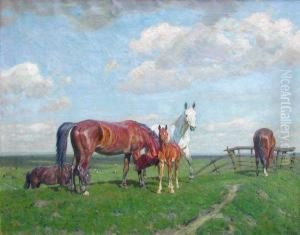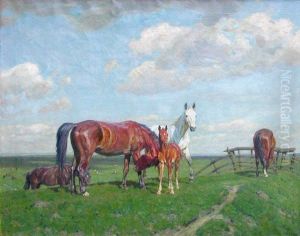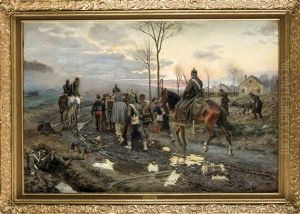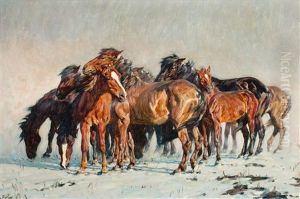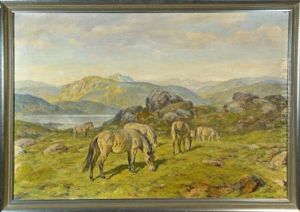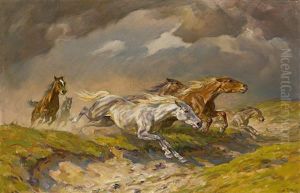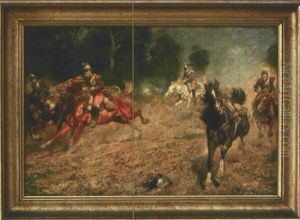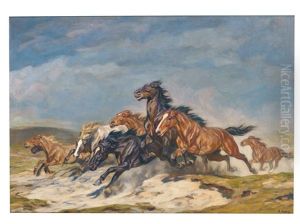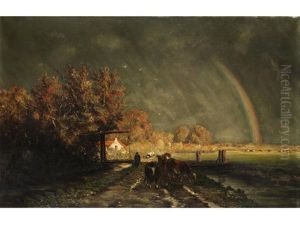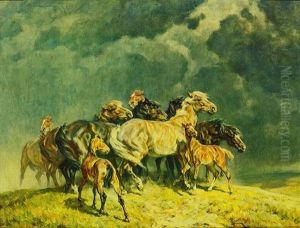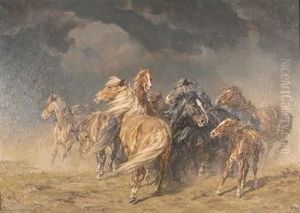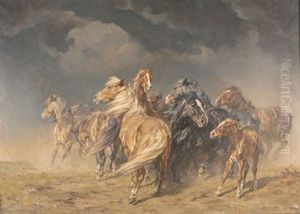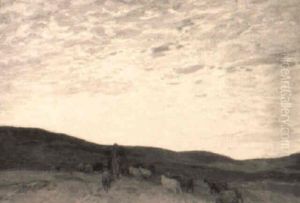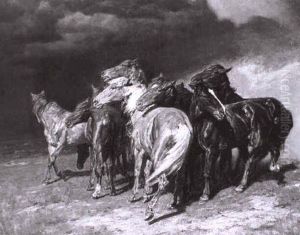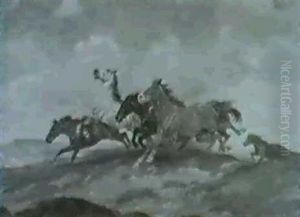Alfred Roloff Paintings
Alfred Roloff was a German painter and graphic artist, born in 1892 in Berlin, Germany. His artistic journey began in the early 20th century, a period marked by significant upheavals and innovations in the art world. Roloff's work is often associated with the Expressionist movement, though he also explored other styles throughout his career. He was known for his vivid use of color and dynamic compositions, characteristics that set his work apart in a time of great artistic diversity.
Roloff's early years were spent in Berlin, where he was exposed to a burgeoning art scene that was being influenced by both traditional and avant-garde movements. This environment provided him with a rich foundation to develop his unique style. He studied at the Berlin University of the Arts, where he was influenced by various teachers and fellow students, absorbing the prevalent artistic theories and techniques of his time.
Throughout his career, Alfred Roloff exhibited his work in numerous galleries and exhibitions across Europe, gaining recognition for his contribution to the German art scene. His paintings often depicted urban life, landscapes, and occasionally, political themes, reflecting the turbulent times he lived in. Despite the challenges posed by the two World Wars and the changing political landscape in Germany, Roloff continued to produce work that was both personal and reflective of the broader societal changes.
After World War II, Roloff's style evolved, showing an increased interest in abstract elements, though he never fully abandoned his expressionist roots. This period of his work is characterized by a more introspective approach, focusing on the interplay of form and color to convey emotion and narrative.
Alfred Roloff passed away in 1972, leaving behind a legacy that has been appreciated in retrospect. While not as widely known as some of his contemporaries, his contributions to the German art scene and the broader Expressionist movement have been recognized in various posthumous exhibitions and retrospectives. His work continues to be studied by art historians and is held in several art collections and museums, both in Germany and internationally.
